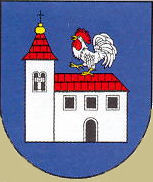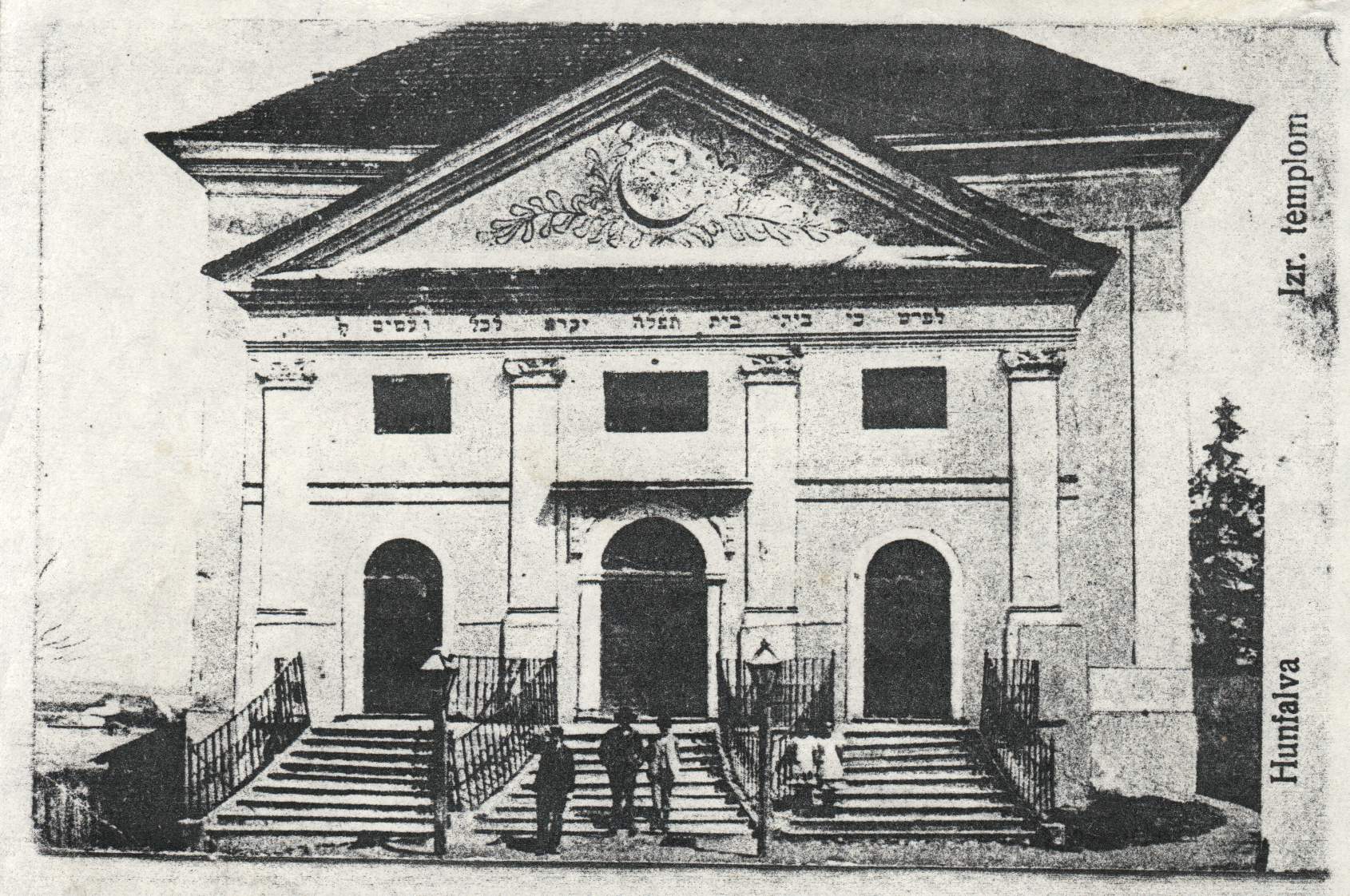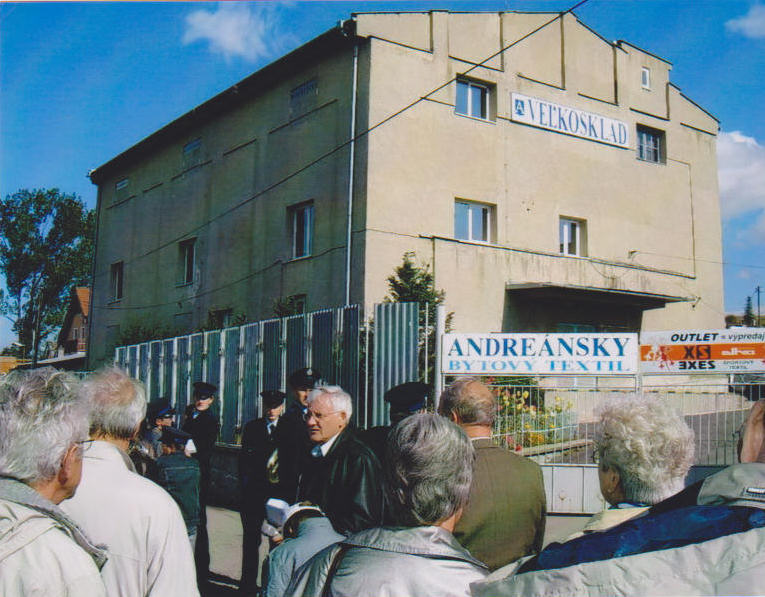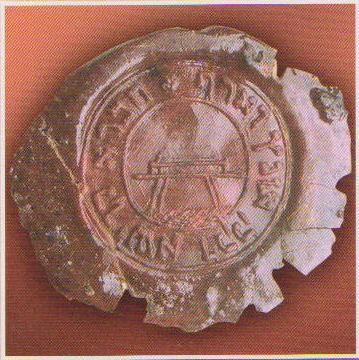|
 |
Huncovce, Slovakia |
On this page:
|
 |
Huncovce, Slovakia |
On this page:
Important Note: Click on any of the images on this page to view an enlargement in a separate window.

Portal entrance to Huncovce's Synagogue, built in 1821, destroyed during WW II
|
Another view of the front of the Syngagogue, date unknown/1/ |
Unknown Person (Rabbi Samuel Rosenberg?) Holding Torah Holy Ark on the Bima; Ark behind./1/ |
Synagogue Interior Columns -- after WW II destruction./1/ |
|
Synagogue Floor Plan and Cross-Section/2/ |
View of Synagogue next to Poprad River and Bridge/1/ |
Details of the Ionic Pillars/2/ |

The former synagogue building as it is used today, photographed September 2007
In for three days in mid September 2007, the town of Huncovce celebrated 750 years of its existence. Among the activities was a walk through the streets. Mr. Jan Gurnik with (unseen) micrphone in hand addresses the crowd and explains that this building was once the pride of Huncovce's Jewish community, but was severly damaged during World War II. It is currently used as a facility for storing fabrics or textiles.
An important religious institution was the Chevra Kadisha. Its articles were formulated on 22nd February 1881 and approved on 12th April 1881. It was an autonomous society connected to the Orthodox Jewish Kehila (community). The first chairman and founder of the Chevra Kadisha was J. A. JANOVITZ; the secretary was Jozef ROTH. Its mission was to encourage love for one’s fellowman. This could be achieved mainly by visiting and taking care of the sick, burying the dead, and maintaining the cemeteries.
The members of the Chevra Kadisha were also expected to take part in the synagogue memorial services for the deceased and to observe the holy traditions. Every member, as entrusted by committee, was obliged to tend to the sick. Even children less than 13 years old could become members of the Chevra Kadisha. The institution was supported by the community’s membership fees. Wealthier members were expected to finance the needs of the poor ones; they also paid for doctors and medicine.

Seal of the Huncovce Chevra Kadisha, in Hebrew letters, one can read
חברא קדישא דקק אונץ דארף
and there is an image in the center of a table of sorts,
presumably representing burial preparations.
Created 19 April 2012
Updated 28 February 2019
Copyright © 2012-2019
Madeleine R. Isenberg
All rights reserved.
|
||||||
This site is hosted at no cost by JewishGen, Inc., the Home of Jewish Genealogy. If you have been aided in your research by this site and wish to further our mission of preserving our history for future generations, your JewishGen-erosity is greatly appreciated.